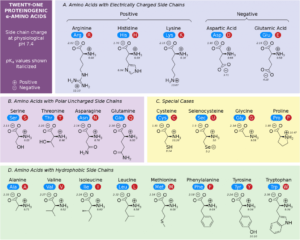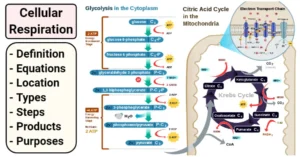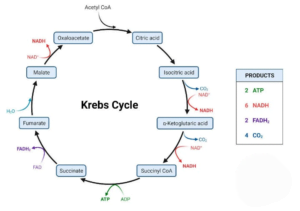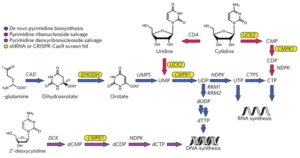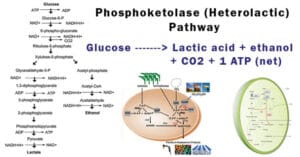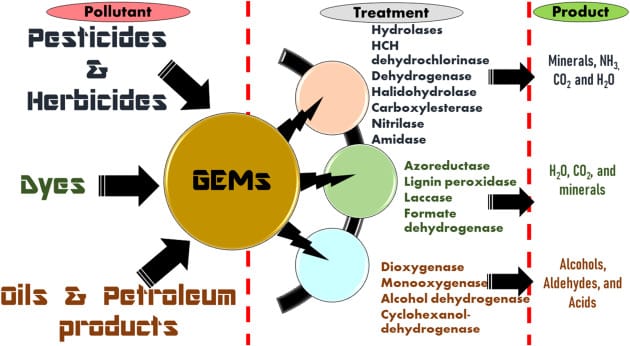Fatty acid synthesis, also known as lipogenesis, is a biological process that occurs in the cytoplasm of cells. The primary substrate for fatty acid synthesis is acetyl-CoA, which is derived from carbohydrates, amino acids, or other fatty acids. The process involves several enzymatic steps:
Acetyl-CoA Carboxylation:
- Acetyl-CoA is carboxylated to form malonyl-CoA in the presence of the enzyme acetyl-CoA carboxylase (ACC).
Fatty Acid Chain Elongation:
- The fatty acid synthesis cycle begins with the condensation of acetyl-CoA and malonyl-CoA, catalyzed by fatty acid synthase (FAS).
- Through a series of reduction, dehydration, and reduction reactions, the fatty acid chain is elongated.
Termination:
- The process continues until the fatty acid chain reaches the desired length, and the fatty acid is released from the fatty acid synthase complex.
Importance:
Energy Storage:
- Fatty acids are a highly efficient form of energy storage. They can be stored in adipose tissue and later mobilized for energy production through β-oxidation.
Cellular Structure:
- Fatty acids are essential components of phospholipids, which are crucial for the structure and function of cell membranes.
Signaling Molecules:
- Fatty acids and their derivatives serve as signaling molecules involved in various cellular processes, including inflammation and metabolism.
Fuel for Organs:
- Certain organs, such as the heart and skeletal muscles, rely on fatty acids as a primary energy source.
Insulation and Protection:
- Adipose tissue, where fatty acids are stored, provides insulation and protection for organs.
Fatty acid synthesis is a vital process that balances energy storage and utilization, contributing to the overall functioning and homeostasis of cells and organisms.
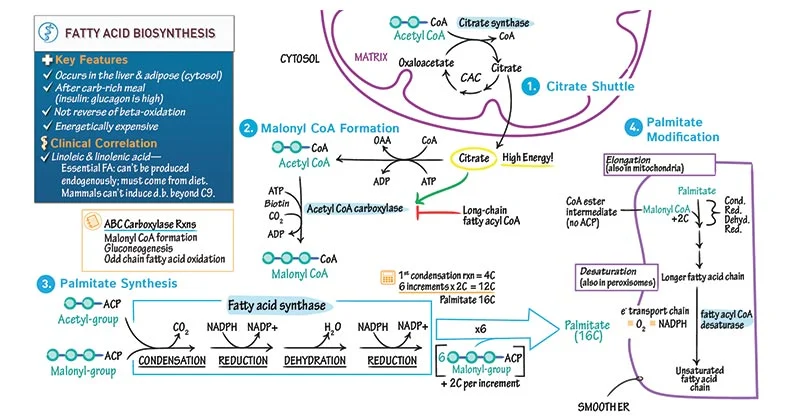
Fatty Acid Synthesis Pathway
- Acetyl-CoA to Malonyl-CoA Conversion:
- Fatty acid synthesis begins with the conversion of acetyl-CoA to malonyl-CoA, catalyzed by the enzyme acetyl-CoA carboxylase (ACC). This carboxylation reaction is a crucial regulatory step in controlling the overall rate of fatty acid synthesis.
- Fatty Acid Synthase (FAS) Complex:
- The FAS complex is a multi-enzyme system responsible for the synthesis of fatty acids. It consists of several distinct enzymatic domains, each carrying out specific functions in the overall process. The growing fatty acid chain is attached to the acyl carrier protein (ACP) within the FAS complex.
- Reaction Types:
- Condensation: Acetyl-CoA and malonyl-CoA undergo a condensation reaction, facilitated by the enzyme condensing enzyme (CE), leading to the formation of a four-carbon molecule.
- Reduction: The four-carbon molecule is then reduced by a series of reduction reactions, mediated by the enzymes ketoacyl reductase (KR), dehydratase (DH), and enoyl reductase (ER). These reactions result in the elongation of the fatty acid chain.
- Saturated Straight-Chain Fatty Acids:
- The sequential addition of two-carbon units through the condensation and reduction steps ultimately leads to the synthesis of saturated straight-chain fatty acids.
- Unsaturated Straight-Chain Fatty Acids:
- To produce unsaturated fatty acids, additional desaturation reactions are required. Desaturation introduces double bonds into the fatty acid chain. These reactions may occur either anaerobically, as in the case of some bacteria, or aerobically, involving enzymes like desaturases in eukaryotic cells.
- Odd-Chain and Branched-Chain Fatty Acids:
- Unique biosynthetic pathways are involved in the synthesis of odd-chain and branched-chain fatty acids. These pathways deviate from the typical even-chain fatty acid synthesis and contribute to the diversity of fatty acid structures.
- Omega-Alicyclic and Tuberculostearic Acid Synthesis:
- Certain organisms have specific pathways for synthesizing omega-alicyclic fatty acids and tuberculostearic acid. These pathways are tailored to the specific needs of the organism and contribute to the structural variability of fatty acids.
- Biological Diversity:
- The various pathways involved in fatty acid synthesis contribute to the diverse array of fatty acids found in biological systems. This diversity is crucial for the functional roles that fatty acids play in cell membranes, energy storage, and signaling.
- Importance for Lipid Metabolism:
- Fatty acid synthesis is a fundamental aspect of lipid metabolism. Understanding these pathways is essential for unraveling the intricacies of how cells regulate and utilize fatty acids for energy production and cellular functions.
Health Implications and Therapeutic Interventions:
- Insights into fatty acid synthesis have significant implications for health. Dysregulation of lipid metabolism, including fatty acid synthesis, is associated with various health conditions such as obesity, diabetes, and cardiovascular diseases. Targeting enzymes involved in these pathways presents opportunities for therapeutic interventions in managing these health issues.
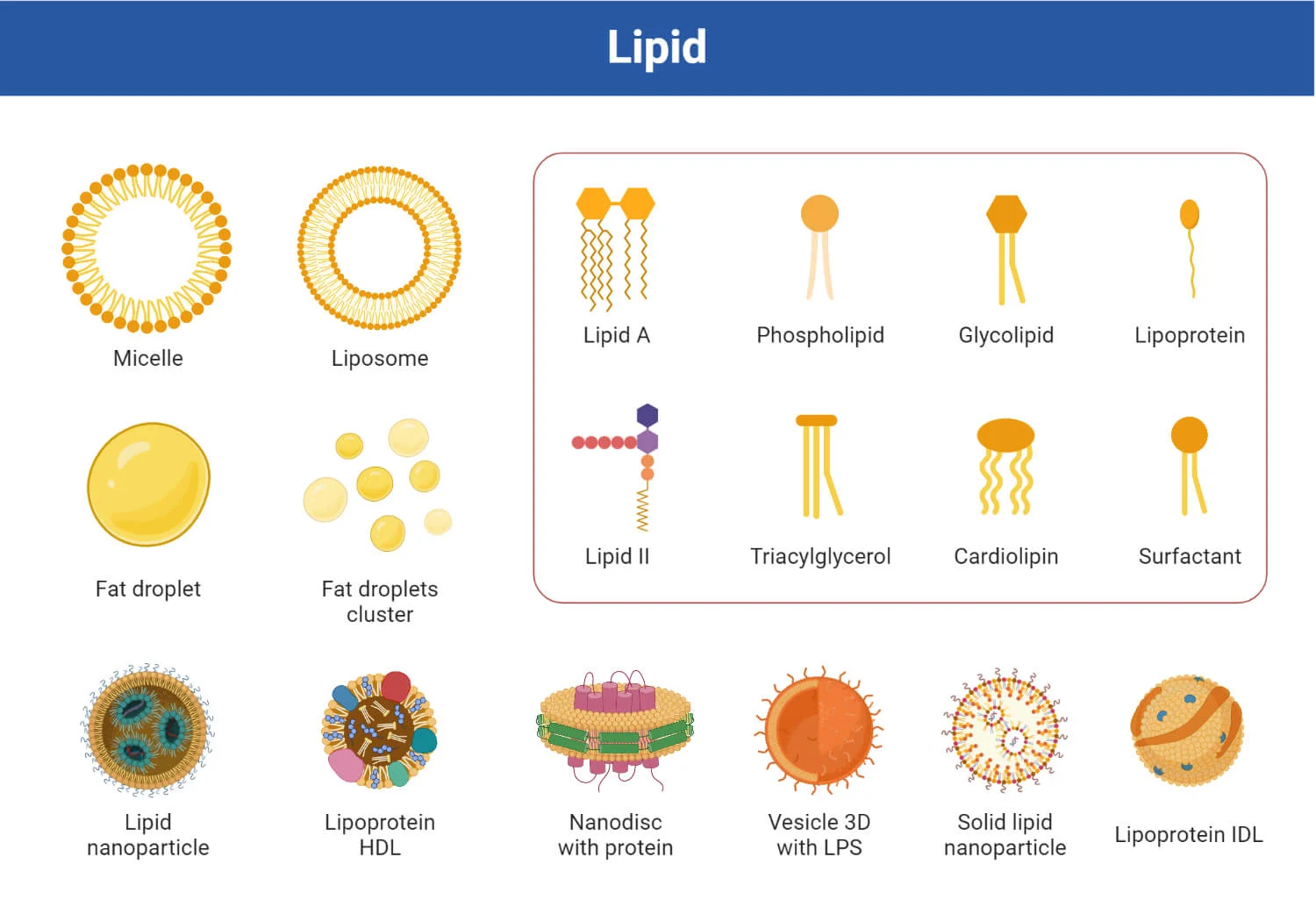
Straight-Chain Fatty Acid Synthesis:
Definition and Classification:
- Straight-chain fatty acids have a linear carbon chain and can be categorized into saturated and unsaturated forms based on the presence of double bonds in their carbon chain.
Saturated Straight-Chain Fatty Acids:
- Saturated fatty acids lack double bonds between carbon atoms in their carbon chain.
Lipogenesis:
- The synthesis of saturated straight-chain fatty acids primarily occurs through a process called lipogenesis.
Enzyme Control and Tissue Locations:
- Essential enzymes control key locations for lipogenesis, particularly in the liver and adipose tissue.
Acetyl-CoA Production:
- The metabolic process begins with the production of acetyl-CoA, often derived from the transformation of carbohydrates into fatty acids.
Cytoplasmic Synthesis:
- The synthesis of fatty acids takes place in the cytoplasm of cells, where acetyl-CoA serves as a substrate for further reactions.
Enzymatic Catalysis:
- Several enzymes play crucial roles in the synthesis process, including acetyl-CoA carboxylase, fatty acid synthase, elongases, and desaturases.
Events Leading to Synthesis:
- The synthesis involves a sequence of events, with acetyl-CoA carboxylase initiating the process, followed by the catalytic actions of fatty acid synthase and various elongases and desaturases.
Fatty Acid Production:
- Through these enzymatic actions, the sequential addition of two-carbon units leads to the elongation of the fatty acid chain, resulting in the production of saturated straight-chain fatty acids.
Gluconeogenesis and Balance:
- While gluconeogenesis allows the synthesis of carbohydrates from fatty acids, animals lack the ability to convert fatty acids back into carbohydrates. This highlights the importance of maintaining a balance between energy intake and expenditure.
Understanding the detailed steps involved in the synthesis of saturated straight-chain fatty acids provides insights into the biological processes that contribute to lipid metabolism and energy balance in living organisms.
Unsaturated Straight-Chain Fatty Acid Synthesis:
Definition and Classification:
- Unsaturated straight-chain fatty acids have one or more double bonds within their carbon chain.
Methods of Introducing Double Bonds:
- Two distinct methods, anaerobic desaturation and aerobic desaturation, are employed to introduce double bonds into the fatty acid chain.
Anaerobic Desaturation:
- Certain microbes utilize anaerobic desaturation, a process where double bonds are added to fatty acids in the absence of oxygen.
Anaerobic Desaturases:
- Specialized enzymes known as anaerobic desaturases catalyze the addition of double bonds in the absence of oxygen.
Aerobic Desaturation:
- In higher species, including humans, unsaturated straight-chain fatty acid synthesis occurs through aerobic desaturation.
Oxygen Requirement:
- Aerobic desaturation enzymes involved in the process require oxygen as a cofactor for their activity.
Understanding the methods of introducing double bonds in unsaturated straight-chain fatty acids provides insights into the diversity of biosynthetic pathways in different organisms. The utilization of anaerobic and aerobic desaturation reflects the adaptability of living systems to their environmental conditions and underscores the importance of these processes in lipid metabolism.
Odd-Chain Fatty Acid Synthesis:
Definition:
- Odd-chain fatty acids are a category of fatty acids characterized by having an odd number of carbon atoms in their carbon chain.
Prevalence and Biological Significance:
- While less common than even-chain fatty acids, odd-chain fatty acids play crucial roles in various biological functions.
Amino Acid Breakdown:
- Certain amino acids, such as valine and isoleucine, can be broken down to produce precursors for odd-chain fatty acids.
Propionyl-CoA Production:
- The breakdown of specific amino acids yields propionyl-CoA as an intermediate product.
Enzymatic Processes:
- Propionyl-CoA, generated during amino acid breakdown, undergoes a series of enzymatic processes.
Conversion to Odd-Chain Fatty Acids:
- Through these enzymatic actions, propionyl-CoA is converted into odd-chain fatty acids.
Biological Functions:
- Despite their lower abundance, odd-chain fatty acids are essential for various biological functions, contributing to the diversity of fatty acids in living organisms.
Understanding the synthesis of odd-chain fatty acids highlights the interconnectedness of metabolic pathways, where the breakdown of specific amino acids can lead to the production of unique fatty acid structures. The significance of odd-chain fatty acids in biological processes underscores the complexity and adaptability of cellular metabolism.
Branched-Chain Fatty Acid Synthesis:
Definition:
- Branched-chain fatty acids are characterized by having one or more branches in their carbon chain.
Enzymatic System:
- The synthesis of branched-chain fatty acids involves a unique enzymatic system dedicated to their production.
Branched-Chain Fatty Acid Synthase:
- A specific enzyme, known as branched-chain fatty acid synthase, plays a key role in introducing branches into the fatty acid molecule.
Enzymatic Mechanism:
- The enzymatic system utilizes branched-chain fatty acid synthase to catalyze the addition of branches to the fatty acid structure.
Crucial Mechanism in Microorganisms:
- Branched-chain fatty acid synthesis is particularly crucial in some microorganisms, where these unique fatty acids are essential for various biological processes.
Effects on Biological Phenomena:
- The presence of branched-chain fatty acids and the enzymatic system involved can have significant effects on diverse biological phenomena within the organisms that utilize them.
Understanding the synthesis of branched-chain fatty acids sheds light on the specialized enzymatic machinery and metabolic adaptations that certain microorganisms have developed. The role of these fatty acids in biological processes underscores their importance in the overall diversity and complexity of lipid metabolism in specific organisms.
Omega-Alicyclic Fatty Acid Synthesis:
Definition:
- Omega-alicyclic fatty acids belong to a special class of fatty acids characterized by having a methyl group at the omega end of the carbon chain and a cyclic structure.
Occurrence in Marine Species:
- These unique fatty acids are found in certain marine species, contributing to the diversity of lipids in these organisms.
Health Advantages:
- Omega-alicyclic fatty acids have been associated with various health benefits, including anti-inflammatory and cardiovascular protective actions.
Enzymatic Processes:
- The synthesis of omega-alicyclic fatty acids involves particular enzymatic processes, but the complete understanding of these processes is still under investigation.
Active Research:
- Researchers are actively working to uncover the specific biosynthetic pathways that lead to the production of omega-alicyclic fatty acids.
Physiological Roles:
- Understanding the biosynthetic processes and physiological roles of omega-alicyclic fatty acids is crucial for comprehending their impact on health and potential therapeutic uses.
Therapeutic Applications:
- Identifying the biosynthetic pathways and physiological roles of omega-alicyclic fatty acids may open up possibilities for therapeutic applications in various health conditions.
The ongoing research on omega-alicyclic fatty acids highlights the importance of exploring unique lipid structures and their potential implications for health. Unraveling the biosynthetic processes of these fatty acids may pave the way for new therapeutic interventions and further our understanding of the intricate roles lipids play in biological systems.
Tuberculostearic Acid Synthesis:
Unique Fatty Acid in Mycobacterium tuberculosis:
- Tuberculostearic acid is a distinctive fatty acid found in the cell walls of Mycobacterium tuberculosis, the bacteria responsible for tuberculosis (TB).
Role in Cell Wall Characteristics:
- Tuberculostearic acid contributes to the impermeability and resilience of the bacterial cell wall, enabling the evasion of host immune defenses.
Unique Biosynthetic Route:
- The production of tuberculostearic acid involves a route exclusive to Mycobacterium tuberculosis, not found in other species.
Condensation of Palmitoyl-CoA:
- The unique biosynthetic route starts with the condensation of two molecules of palmitoyl-CoA, forming a dimeric intermediate known as phthioceranic acid.
Dimeric Intermediate:
- Phthioceranic acid serves as the first step in the production of tuberculostearic acid.
Enzymatic Processes:
- Further modification of the dimeric intermediate involves enzymatic processes such as reduction, methylation, and dehydration.
Exclusive Enzymes in Mycobacterium TB:
- Enzymes responsible for the modification steps are exclusive to Mycobacterium tuberculosis.
Potential for Drug Development:
- Understanding the enzymes involved in the unique biosynthetic pathway of tuberculostearic acid offers potential insights for the development of new anti-tuberculosis medications.
The study of tuberculostearic acid synthesis not only provides insights into the specific adaptations of Mycobacterium tuberculosis but also offers a potential target for therapeutic intervention in the fight against tuberculosis. Researchers exploring the unique enzymatic processes involved may uncover novel strategies for developing drugs to combat this infectious disease.
Importance of Fatty Acid Understanding:
Deciphering Lipid Metabolism:
- Understanding the complexity of fatty acid production is crucial for unraveling the intricacies of lipid metabolism, providing insights into how organisms generate and utilize these essential molecules.
Drug Development:
- Insights into fatty acid production have significant implications for drug development. Dysregulation of fatty acid production is implicated in various metabolic illnesses, and understanding the involved enzymes and pathways can lead to the identification of new therapeutic targets.
Metabolic Diseases:
- Dysregulation of fatty acid production is linked to pathophysiology in metabolic illnesses such as obesity, diabetes, and cardiovascular diseases. Studying these pathways allows researchers to develop targeted interventions for therapeutic purposes.
Therapeutic Targets:
- Better understanding of enzymes and metabolic pathways involved in fatty acid production allows researchers to identify new therapeutic targets and develop strategies to modify lipid metabolism, potentially offering novel treatments for metabolic disorders.
Nutritional Therapy:
- Investigation of fatty acid production provides opportunities for nutritional therapy. Dietary changes in fatty acid consumption, such as altering the ratio of saturated to unsaturated fats, have demonstrated effects on health outcomes. Enhanced cardiovascular health, for example, has been associated with consuming more unsaturated fats, particularly omega-3 fatty acids.
Health Outcomes:
- A deeper understanding of fatty acid production enables a more complex comprehension of how dietary choices impact health and disease. This knowledge informs nutritional recommendations and strategies for maintaining or improving health.
Lipid Research and Medication Development:
- Developments in lipid research have broad implications for medication development. Diseases like cancer, neurological disorders, and metabolic syndromes are closely linked to lipid metabolism. Researchers can explore innovative treatment approaches by focusing on specific enzymes or pathways involved in fatty acid production.
Anti-Tuberculosis Medications:
- The investigation of specific fatty acids, such as tuberculostearic acid in Mycobacterium tuberculosis, offers potential targets for the creation of new anti-tuberculosis medications. Targeting the unique enzymatic pathway involved in tuberculostearic acid formation could compromise the bacterial cell wall integrity and enhance the effectiveness of existing TB therapies.
In summary, understanding fatty acid production not only contributes to our knowledge of fundamental biological processes but also holds immense practical value in drug development, nutritional therapy, and addressing various health conditions.
Conclusion:
In conclusion, fatty acid synthesis is a complex and tightly controlled process encompassing the production of various types of fatty acids, each with unique characteristics and functions. The synthesis of straight-chain fatty acids, including saturated and unsaturated variants, along with odd-chain fatty acids, branched-chain fatty acids, omega-alicyclic fatty acids, and tuberculostearic acids, highlights the diversity and intricacy of lipid metabolism.
The study of fatty acid synthesis provides valuable insights into the methods and regulatory mechanisms governing lipid biology. This understanding has far-reaching implications, not only for comprehending the complexity of lipid metabolism but also for developing targeted therapies to address lipid-related disorders. The intricate enzymatic processes involved in fatty acid synthesis offer potential therapeutic targets that can be harnessed for the development of innovative treatments.
As our understanding of fatty acid synthesis advances, it opens up new possibilities for creating cutting-edge treatment approaches that can enhance human health and well-being. Ongoing research in this field is crucial to uncovering additional details, refining our knowledge, and translating these insights into practical applications. The promising nature of fatty acid synthesis research underscores its significance in advancing our understanding of fundamental biological processes and improving the potential for therapeutic interventions in various health conditions. Continued exploration of this intricate process is essential for paving the way towards enhanced health outcomes and the development of novel treatment strategies.

